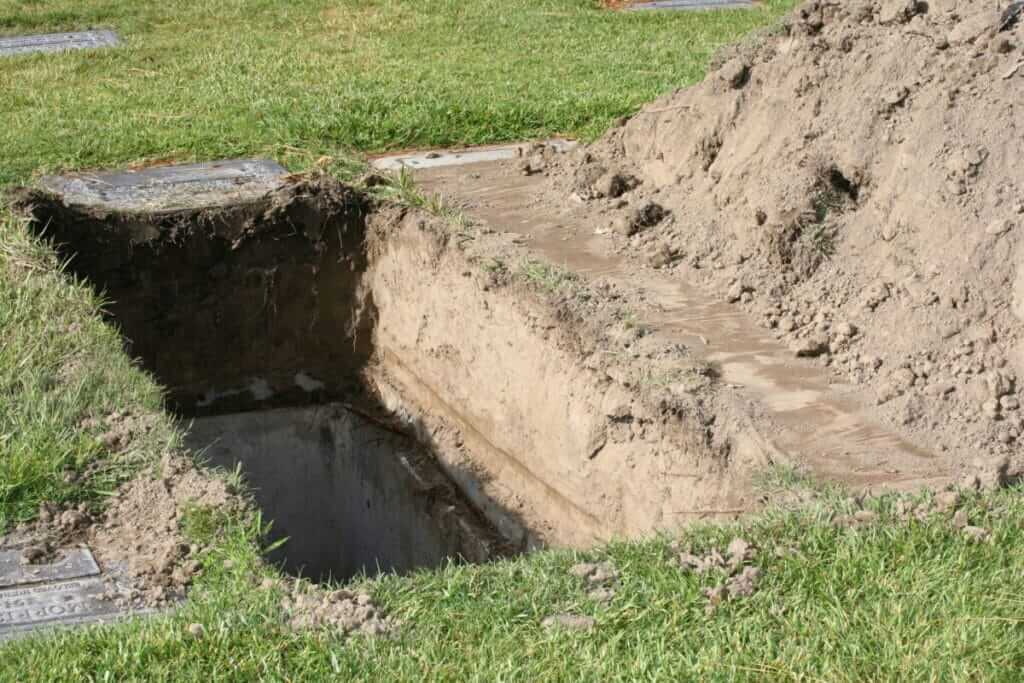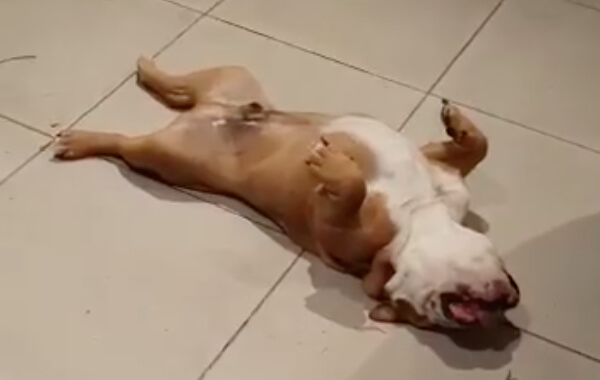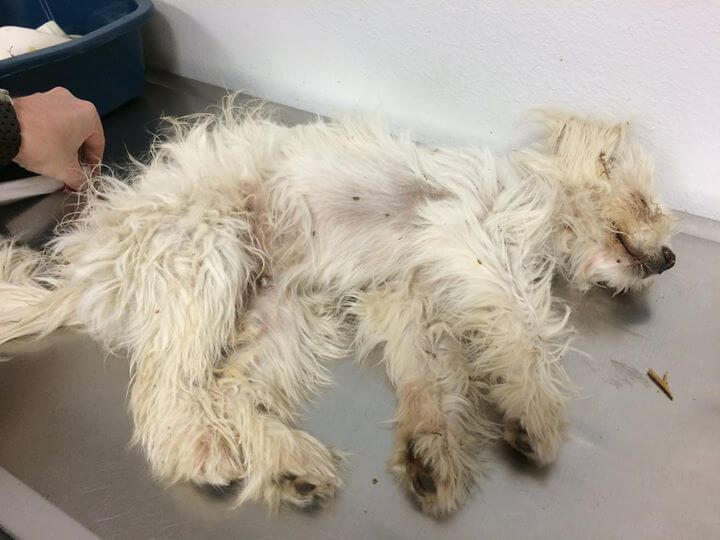Before bringing a pet home, most people prepare adequately for the additional member of the family.
They get a comfortable place for the pet to sleep, a good vet to take care of her medical needs, good food, leashes, collar IDs, you name it.
Understandably, most don’t think about the death of the pet—specifically, what to do when the dog dies.
They would rather cross the bridge when the time comes than prepare for it. That means waiting until the dog is actually dead or dying.
So your beloved pet has crossed over to the other side.
Would you know what to do at the moment?
Highly unlikely…
As if the emotional torture of dealing with the grief isn’t enough, you have to decide what to do with the body.
That’s quite a lot to take.
But we are here to help. Here is a quick guide of the steps to take as far as disposing or your dog’s body is concerned
1. Ensure The Dog Is Dead

This might sound irrelevant but you want to make sure your doggie is indeed dead before you proceed.
It is not uncommon for pet owners to declare their dogs dead when in reality, they are still alive.
The surefire way of making sure your pooch is dead is to feel her heartbeat.
If she has a pulse, it means she’s alive.
In that case, perform any first aid or CPR you are aware of. If you are completely blank, pick up the dog and bring them to the vet.
While you are at it, it might be a good idea to learn about some of the false signs that your dog is alive.
Dead dogs sometimes show signs of life when they are gone. These include breathing or release of air when the mouth is opened or moved, twitching or muscle spasms, and the release of gas and bodily fluids.
These are natural bodily functions that take place when a dog dies naturally and shouldn’t be mistaken for life.
You may want to check: How to Tell How Long a Dog Has Been Dead
2. Handle The Body Properly
As soon as you are sure that your dog has passed away, you want to handle the body with high sanitary standards.
Dead dogs leak a lot of fluids as their muscles no longer work.
They will often release feces and urine if these were present.
You don’t want these to flow to the wrong place.
To be safe, get some towels and place them beneath the dog’s body to catch the mess.
If you have a plastic garbage bag, you can use that as well.
Here, you might want to insert the entire body of the dog inside in a fetal position with its paws curled up.
This way when rigor mortis (stiffening up of the muscles) sets in, the dog can still be easily transported later on.
If you have a large dog, you might need an extra set of hands to help with this.
Once you are done wrapping the body, place it in a cool place to slow down the decomposition process.
3. Decide How You Want To Dispose Of The Body

Your next order of business is to decide what to do with the body.
You have several options to choose from. Let’s discuss them below.
I. Burial On Your Property
Some people like to keep their pets close even after death.
As a result, they prefer burying them somewhere on the property.
The backyard is always the most preferred location but you can settle for any space that you are okay with provided it is an area that cannot be dug up easily.
You should also go for a spot with good drainage to avoid rainwater from unearthing your pet’s body.
Dig the grave around 3-5 feet deep and lace the wrapped dog inside.
Get rid of the plastic before you do so as it is not decomposed.
You may use a carton as a coffin or just a towel.
Once the dog is carefully placed, fill the grave with soil to the top to prevent scavengers from coming around.
Keep in mind that some states don’t allow the private burial of animals in homes.
Some allow it but have strict guidelines to be followed.
You might want to find out if your local authorities are okay with it.
Additionally, carry out a small funeral service for the departed dog if you please.
This helps with closure or dealing with the grief of losing the dog.
If you do, be sure to keep the pet in the refrigerator or freezer if the service doesn’t happen immediately.
Related: How to Preserve a Dead Pet
II. Burial In A Pet Cemetery
A pet cemetery is an excellent option for people who anticipate moving houses or those whose local laws don’t allow for private pet burials.
This option isn’t cheap but it gives you the opportunity of visiting your dog anytime you please.
Pet cemeteries these days offer packages including opening and closing the gravesite, the casket, and the plot of land for the burial.
Expect to splurge a few hundred dollars for the burial.
Get in touch with the nearest pet cemetery and inquire about what is expected of you.
III. Cremation
Pet cremation is an excellent option for pet owners who don’t want to deal with the burial of their beloved pets.
Some consider it a respectful way of dealing with their dogs’ remains.
The owners don’t have to worry about animals scavenging their dog’s body or the chance of it being unearthed by floods.
Plus cremation allows you to take your dog wherever you go.
You can even request that the ashes are buried with you when you pass on.
These reasons show why cremation is the most popular way of disposing of dead dogs in the United States.
Pet cremation comes in two options:
- You can have your dog’s body cremated privately so that its ashes don’t mix with those of other dogs. This costs a pretty penny for obvious reasons.
- If your budget is tight, you can have your dog cremated with others at the pet clinic. Call your local pet clinic and determine what route you will take.
IV. Animal Control Services
If you don’t have the cash or the space to dispose of your dog in any of the above options, you can call your local animal control service to handle things for you.
Granted, this is a rather unpleasant method of saying bye to your pooch for all they’ve done for you but if you can get over the guilt, it is a good option.
Animal control services utilize grants and donations to dispose of the bodies of animals.
They may ask for a small fee from you for the service but in most cases, they are 100% free.
They will come over and pick up your dog and take it from there.
Additional Tips

There are a few more pieces of advice we’d like to talk about regarding the disposal of pets’ bodies. These include the following.
- Call your vet if you don’t know what to do. Knowing the options available for dealing with your dog’s remains is one thing. Making a decision on what to do is another. If you are lost on how to proceed, please contact your vet. They should be able to guide you on what to do with the dead pup. Most of them have contacts for animal control services, pet cemeteries, and cremators. Also, they will just point you in the right direction regarding the whole issue of disposing of your dog’s remains.
- Always wear gloves when handling your pet’s body for protection
- Take action quickly. Decomposition is rather fast than most people know. You don’t want to deal with a messy dog’s body later on.
- Manage grief and sadness after your pet dies. Surround yourself with people that understand what you are going through.
Closing Thoughts
Losing a pet is truly difficult.
For all your dog does to you, the thought of never seeing or talking to them can be hard to come to terms with.
Then there’s the body that awaits disposal.
We hope this post has shed some light on what to do.
Other Posts You May Want to Check:
As an Amazon Associate, we may receive a small commission from qualifying purchases but at no extra cost to you. Learn more. Amazon and the Amazon logo are trademarks of Amazon.com, Inc, or its affiliates.

